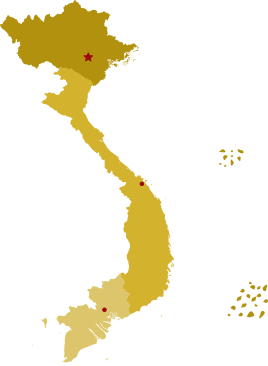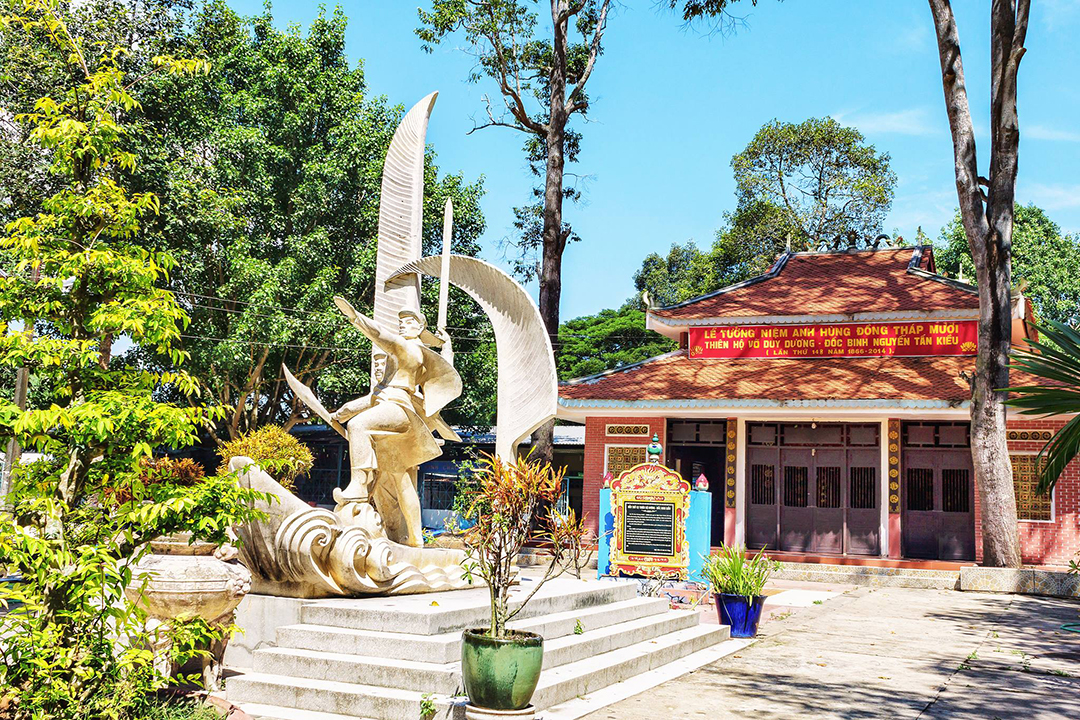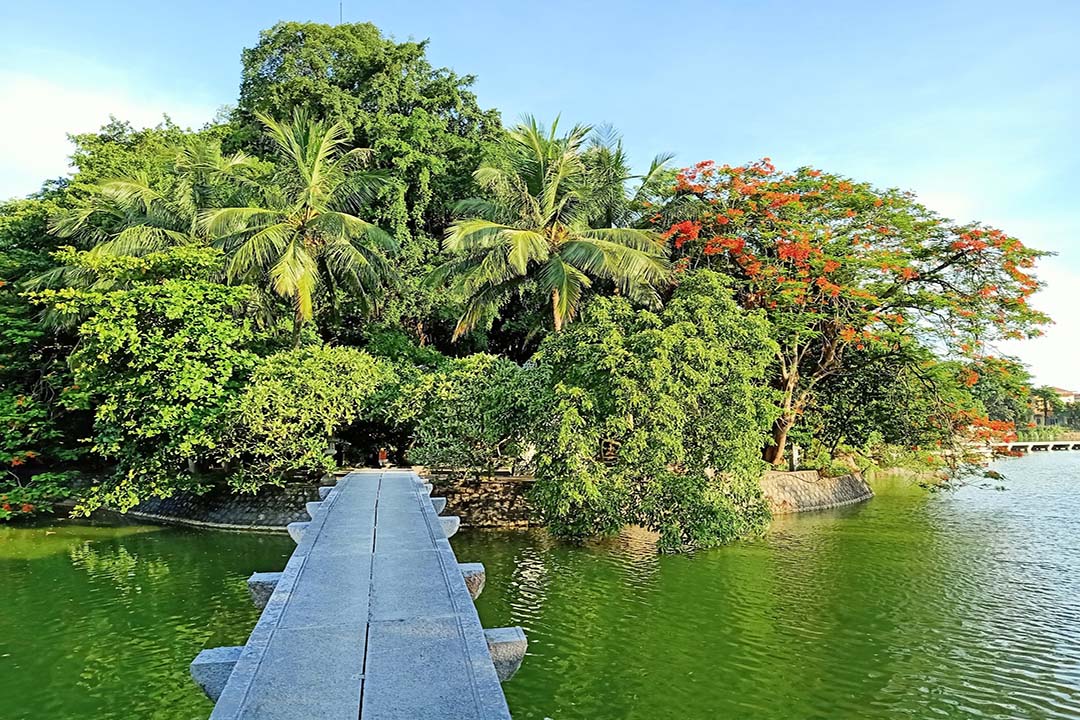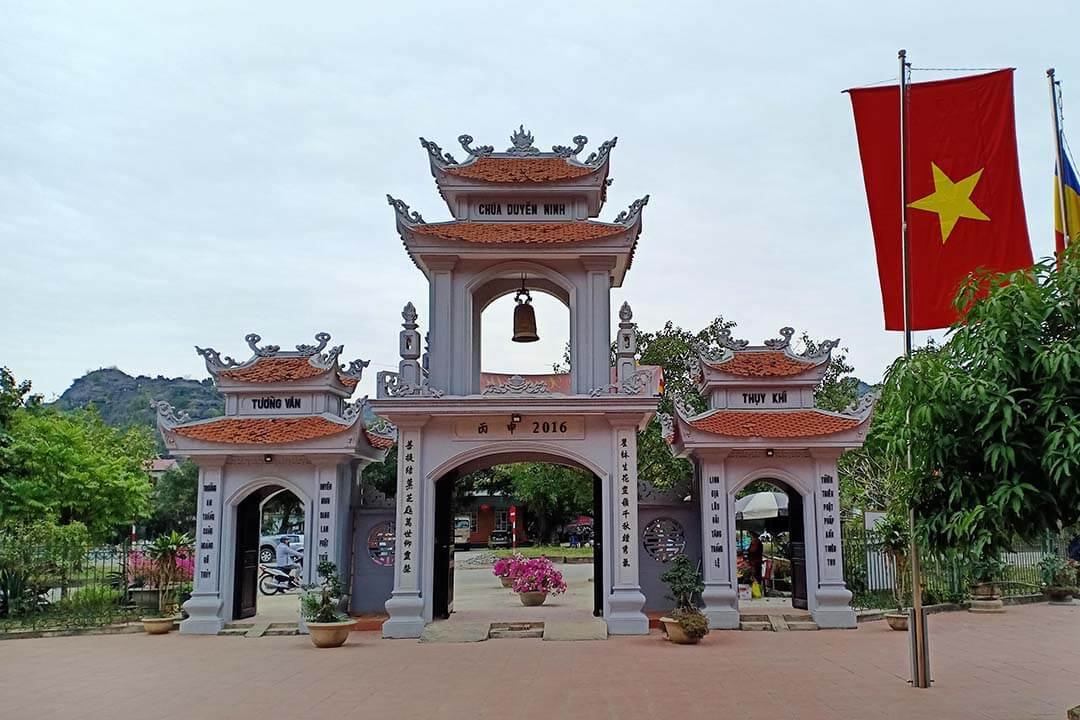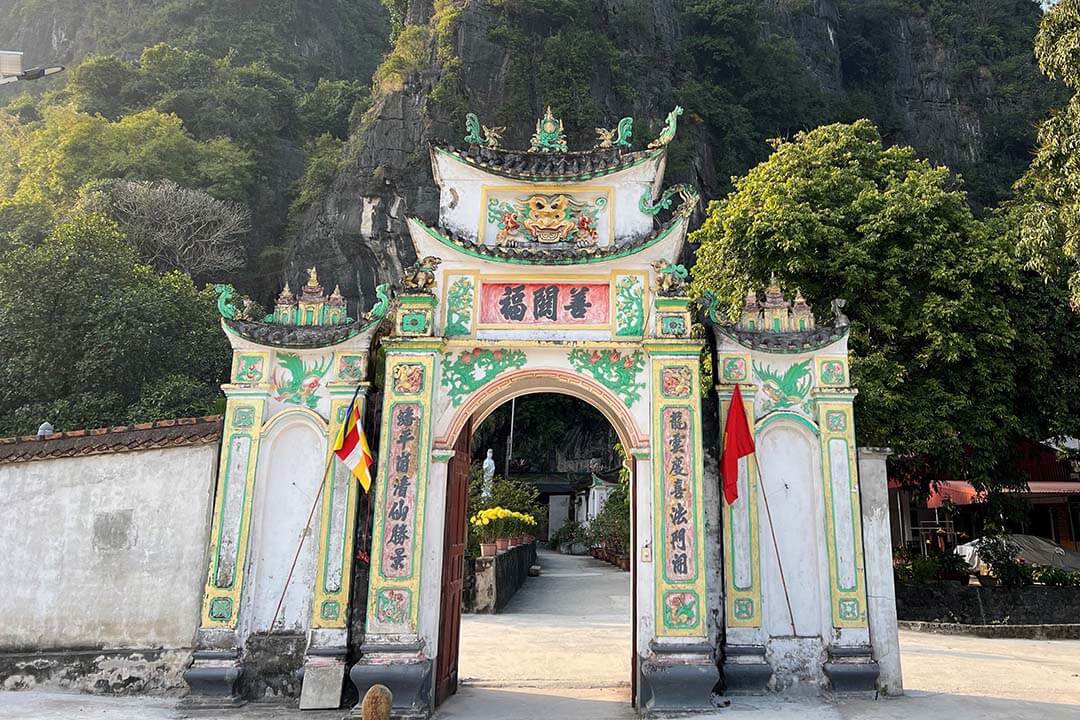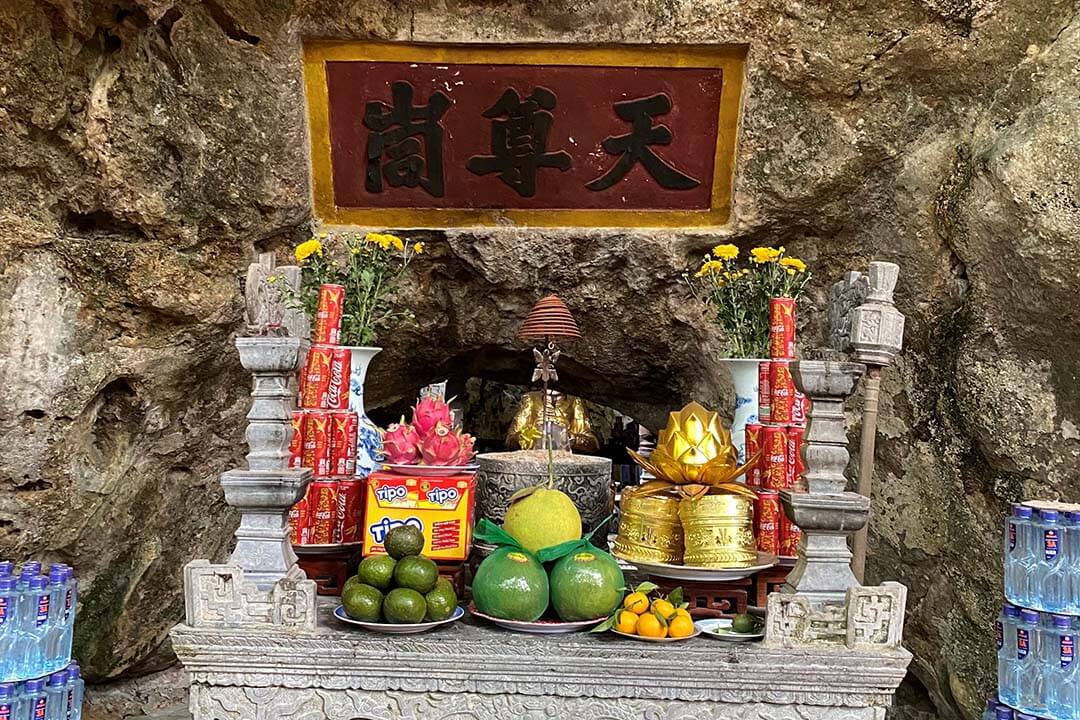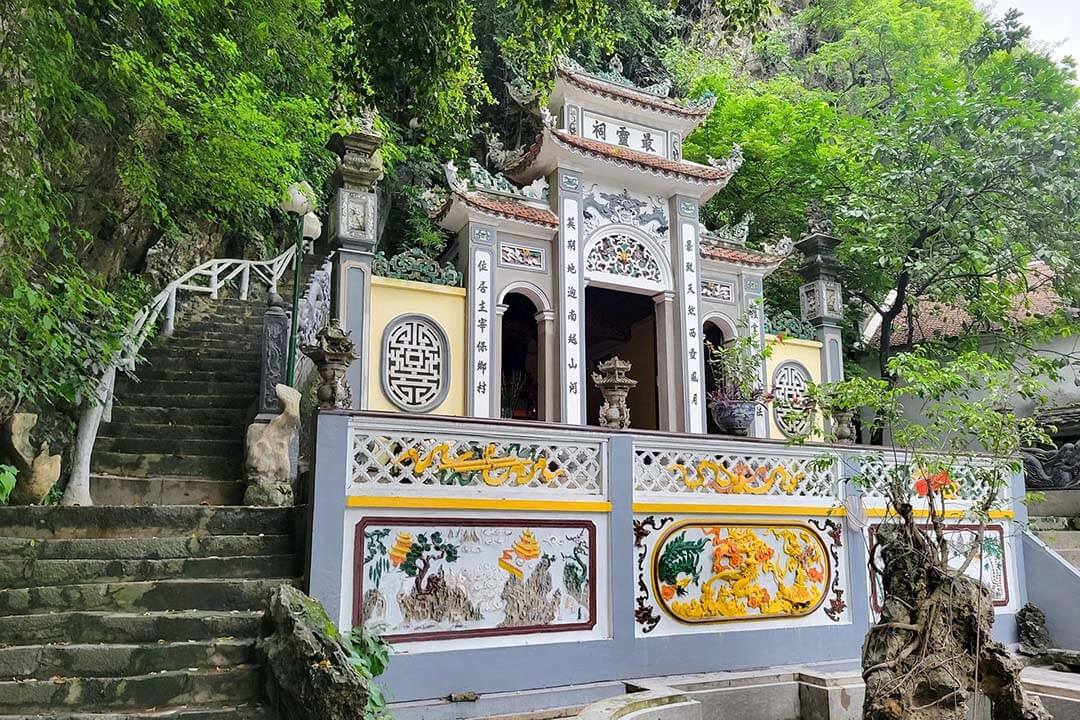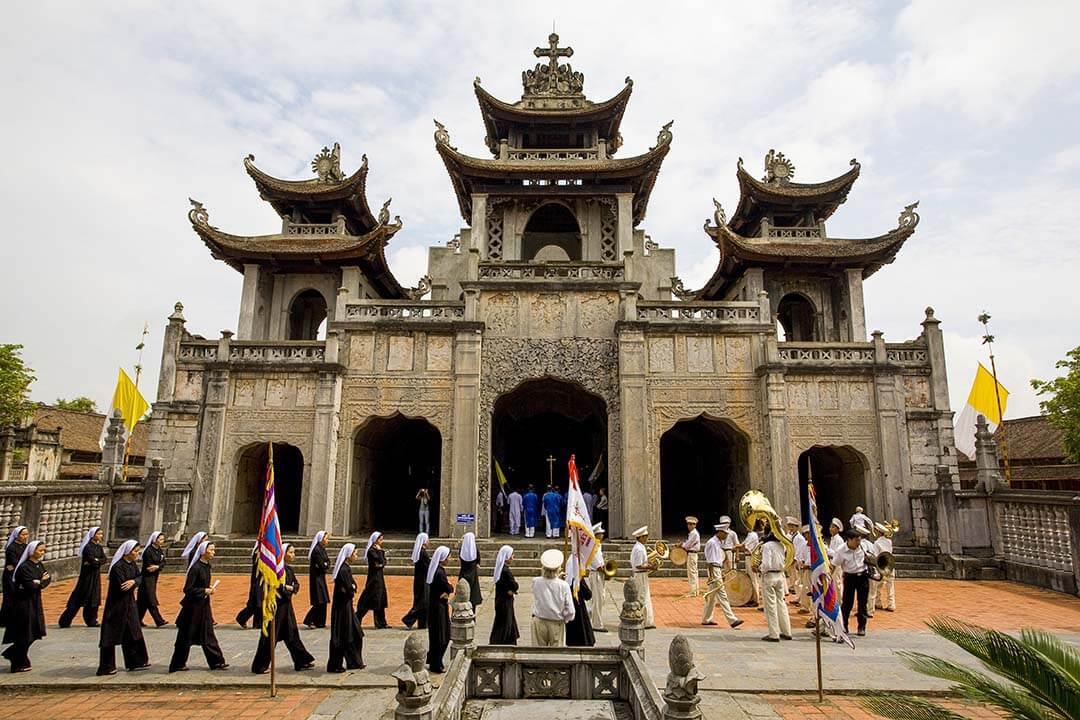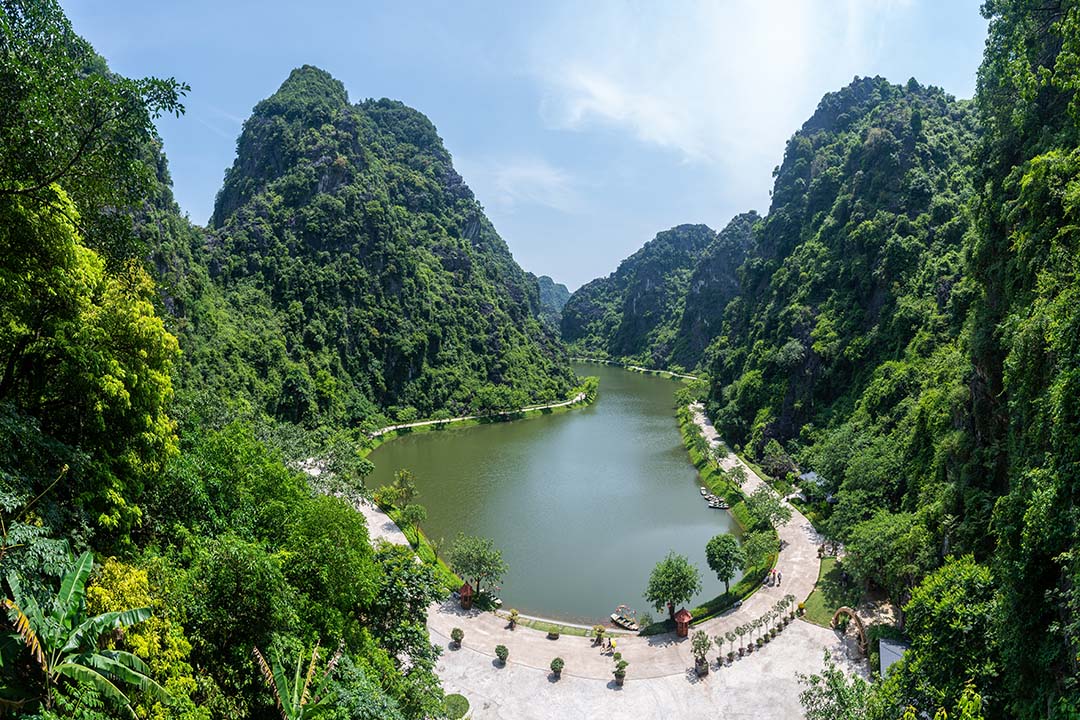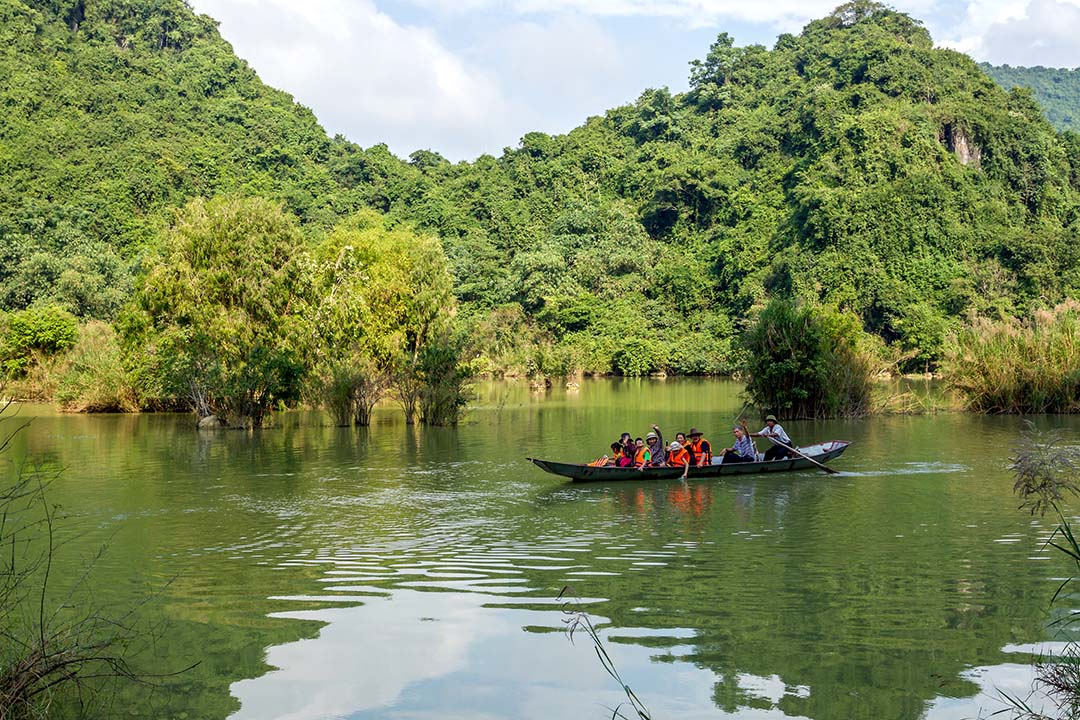Sep - 17 - 2025
Van Long Wetland Nature Reserve is located along the northeastern border of Ninh Binh Province, Vietnam. This area is among the few remaining intact lowland inland wetlands in the Red River Delta. It features limestone karsts surrounded by a freshwater lake, marshes, and swamps.
Van Long Wetland Nature Reserve offers an immersive experience of pristine nature and rich biodiversity. Known as the “No-wave Wetland” for its calm, mirror-like waters, it features stunning limestone formations reflecting serene landscapes. The reserve is home to over 40 species of flora and fauna, making it a haven for wildlife enthusiasts. Additionally, it serves as a vital bird-watching site, showcasing migratory and native species in a lush sanctuary.
For those planning their next travel adventure, GTrip offers insights into the best times to visit. Additionally, it highlights eco-friendly activities to enjoy and provides tips for navigating the peaceful waterways. Let’s take a look!
Location and general information of Van Long Wetland
Van Long Wetland Nature Reserve is located in Dai Hoang Commune, Ninh Binh Province (former Gia Vien district, Ninh Binh Province, Vietnam). It spans approximately 3,500 hectares, including 2,745 hectares specifically managed as a natural reserve. It connects the majestic limestone mountains of the former Hoa Lu district to the tranquil waterways below. The reserve borders significant landmarks, including Cuc Phuong National Park and the historical site of Hoa Lu. This enhances its appeal to eco-travelers and nature enthusiasts alike.
Van Long can be found about 15 kilometers from Ninh Binh City, making it easily accessible for those exploring the region. It is situated approximately 90 kilometers from Hanoi, the capital city of Vietnam. The proximity to major landmarks, such as Trang An Scenic Landscape Complex, further enriches the area’s allure.
Traveling to Van Long Wetland is straightforward, with multiple options available. For those preferring rail travel, trains run regularly from Hanoi to Ninh Binh. Easy connections to buses or taxis are available for the final leg of the journey.
Car rentals are also popular for people wishing to explore the scenic countryside at their own pace. Buses from Hanoi offer budget-friendly options, taking around two hours to reach Ninh Binh, followed by a short taxi ride to the reserve. Motorcyclists will enjoy the winding roads through rice paddies and limestone hills, making the journey an adventure in itself.

General information about Van Long wetlands will be answered in detail in the sections below
Basic information
Van Long Wetland Nature Reserve covers an expansive area of 3,500 hectares. This makes it one of the largest wetlands in Northern Vietnam. Of this total, approximately 2,745 hectares are dedicated to conservation efforts as a natural reserve.
This emphasizes the significance of preserving its rich ecosystem. More than 400 acres of the region are often underwater, creating a dynamic habitat that changes with the seasons and supports a diverse array of wildlife.
The landscape features of Van Long are nothing short of spectacular. They showcase a harmonious blend of wetlands, karst formations, and fertile rice paddies. The wetlands serve as a vital ecosystem, home to various bird species. The iconic limestone cliffs rise majestically above the waters, providing stunning views. The lush green rice paddies surrounding the wetlands add to the area’s charm. They offer a picturesque backdrop for photography and leisurely strolls.
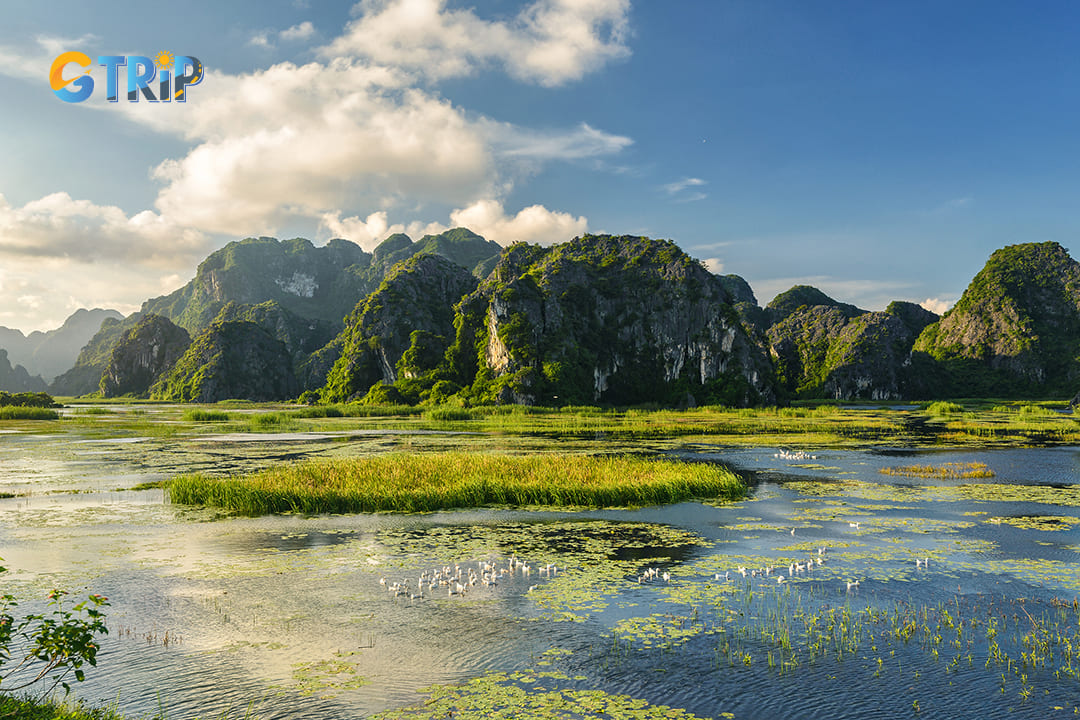
Basic information about Van Long Wetlands and panoramic views
Biodiversity and wildlife of Van Long Wetland Nature Reserve
Van Long Wetland Nature Reserve hosts a remarkable array of biodiversity, making it a vital habitat for various species. The reserve contains numerous ecosystems that support both terrestrial and aquatic wildlife.
Rare and endangered species
Among the notable fauna, the Delacour’s langur is one of the most critically endangered species found in Van Long. This primate is characterized by its striking black and white fur and distinctive facial features.
The Delacour’s langur is rare, primarily due to habitat loss and hunting pressures. Conservation efforts are crucial to protect its population, as it faces significant threats in the wild. The reserve provides a safe habitat, ensuring the survival of this unique species, often a highlight for eco-conscious travelers.
In addition to the Delacour’s langur, Van Long is home to various other notable wildlife. The area features a diversity of birds, reptiles, and mammals that thrive in its unique ecosystems. Common species include waterbirds, snakes, and small mammals, all contributing to the ecological balance of the region.
Protecting these species is vital, as many face threats from habitat degradation and climate change. This underscores the importance of ongoing conservation initiatives.
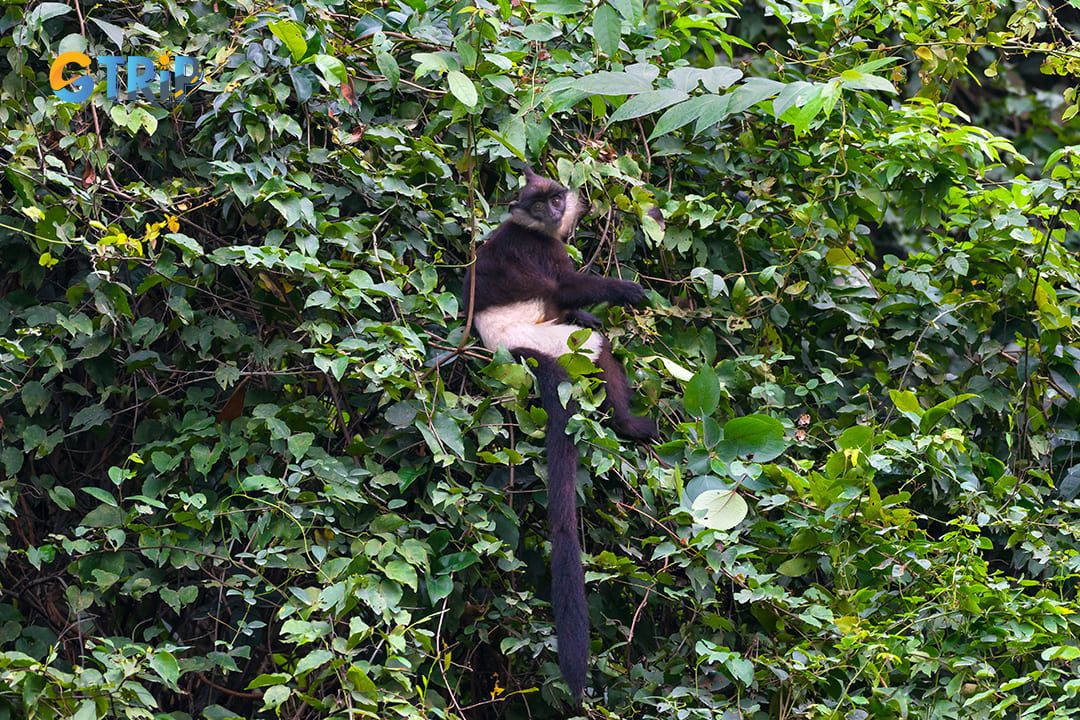
Delacour’s langur in Van Long
Flora and vegetation
The flora in Van Long Wetland consists of a rich variety of plant species, with both terrestrial and aquatic vegetation flourishing in the reserve. The ecosystem is characterized by extensive rice paddies, lush wetlands, and patches of forest.
These habitats support a diverse range of plants that provide food and shelter for local wildlife. Common plant species include reeds, sedges, and various aquatic plants that thrive in waterlogged conditions. This diversity of vegetation enhances the beauty of the reserve and plays a critical role in maintaining the ecological balance.
As the seasons change, so too does the flora of Van Long. The reserve experiences noticeable shifts in vegetation, influenced by seasonal weather patterns. During the rainy season, the wetlands expand, and aquatic plants flourish, creating a vibrant ecosystem teeming with life.
>> Get full information about Ninh Binh weather and climate each month
Conversely, during the dry season, water levels recede, exposing mudflats that support different plant species. This seasonal variability contributes to the area’s biodiversity and offers unique opportunities for wildlife observation throughout the year.
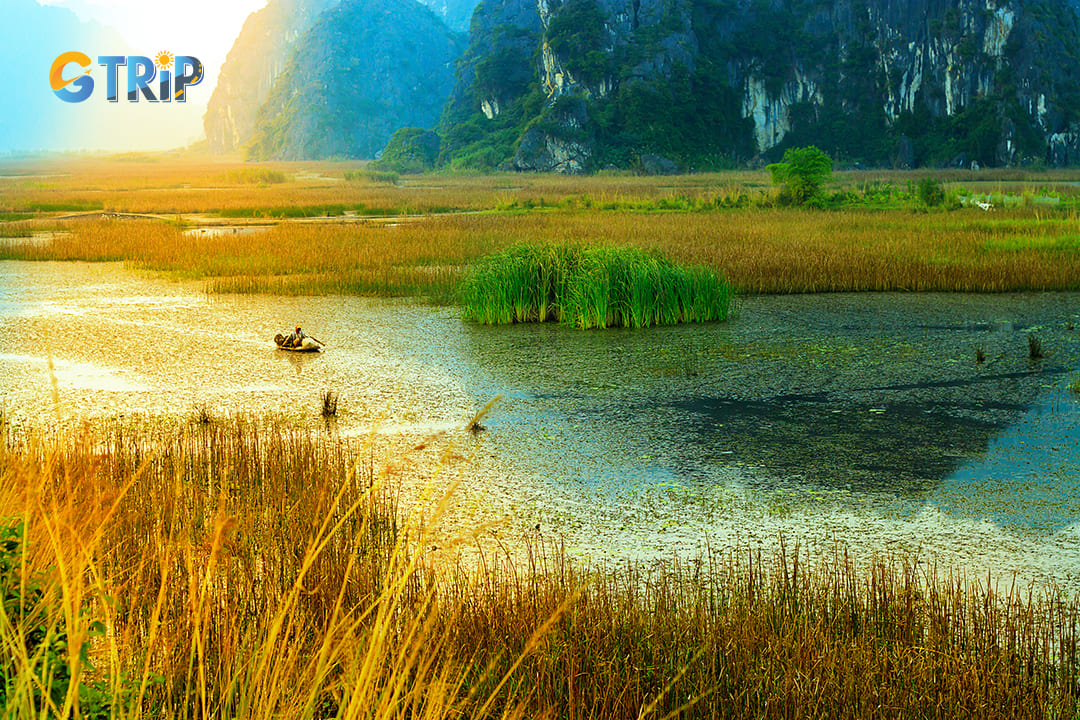
Flora and vegetation in Van Long
Birdwatching opportunities
Van Long Wetland Nature Reserve offers exceptional birdwatching opportunities, attracting enthusiasts from around the globe. The reserve provides a unique habitat for both migratory birds and local species, making it ideal for birdwatching experiences.
Among the popular birds to observe are the black-crowned night heron, egrets, and various species of ducks. The best times for birdwatching in Van Long are during the migratory seasons in spring and autumn when a plethora of birds pass through the area.
The reserve features several top birdwatching spots, including the calm waters of the wetlands and the surrounding rice paddies. Strategic locations along the bamboo boat routes provide unobstructed views. They allow birdwatchers to capture stunning photographs and enjoy the serenity of the natural environment.
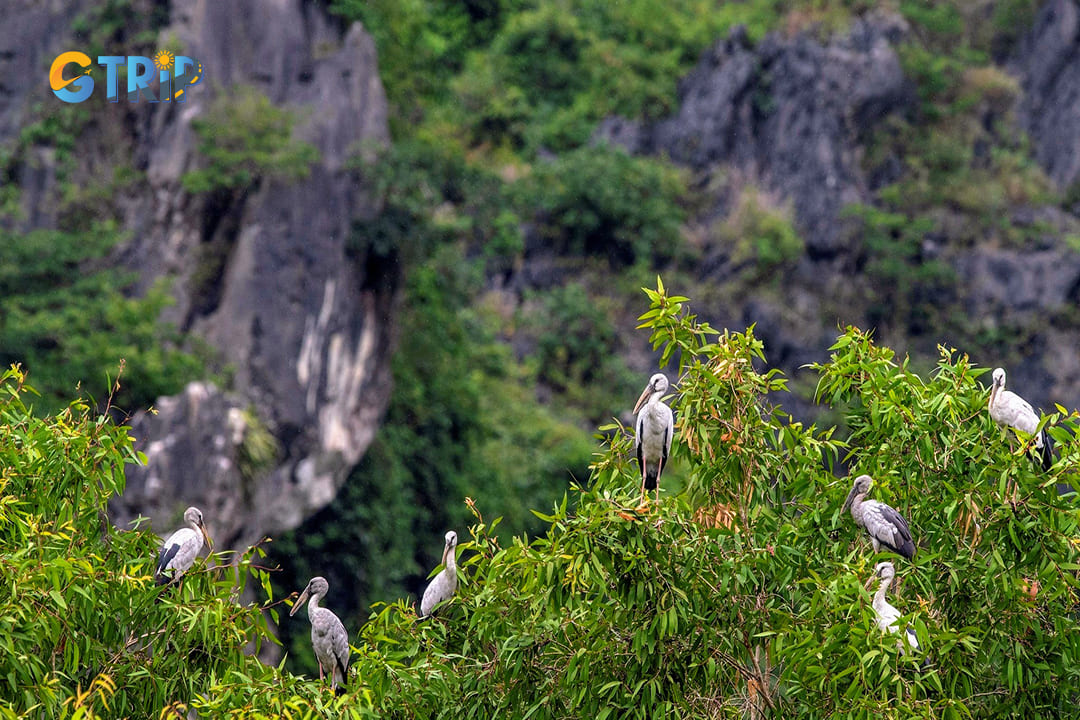
Birdwatching opportunities in Van Long
Geography and landscape of Van Long
The geography and landscape of Van Long Wetland Nature Reserve are characterized by breathtaking limestone karst formations, expansive wetlands, and picturesque rice paddies.
Limestone karst formations
The landscape of Van Long is marked by impressive limestone karst formations, which are a defining feature of the reserve. These formations consist of towering peaks, rugged cliffs, and unique rock structures that dominate the area. Key limestone hills and mountains are scattered throughout, adding a striking visual contrast to the serene wetlands below.
Van Long includes several notable peaks and distinctive rock formations, with some reaching over 100 meters in height. Their distinct shapes, formed over millions of years through erosion, provide a natural wonder for travelers. The karst landscape in Van Long is of great geological importance, as it represents a rare, preserved ecosystem that supports biodiversity unique.
This landscape is characterized by intricate caves, cliffs, and formations that reveal the long history of geological processes in the region. The limestone formations are not only visually stunning but are also essential in maintaining the ecological balance of Van Long. They provide shelter and habitats for local wildlife, supporting the region’s unique biodiversity.
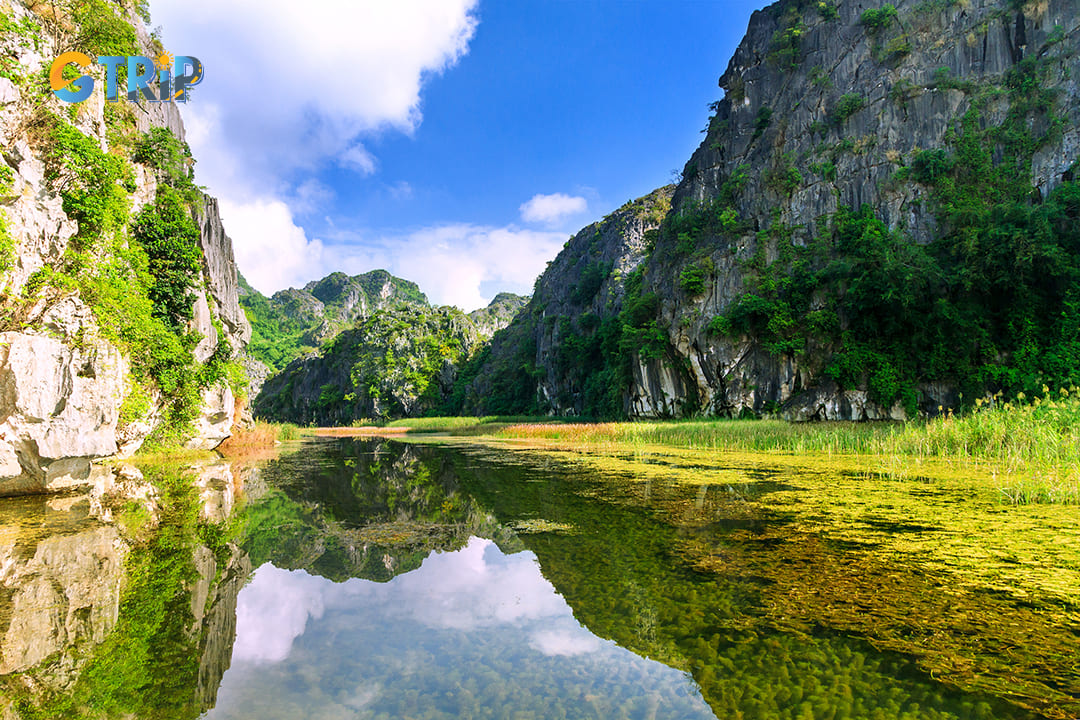
Limestone karst formations of Van Long
Wetland ecosystem
The wetland ecosystem in Van Long supports a diverse range of flora and fauna. This wetland is essential for both aquatic and terrestrial life, encompassing species that thrive in and around the water.
Known as the “Natural Mirror”, the wetland’s calm waters reflect the surrounding limestone mountains and sky, creating mesmerizing and picturesque views. This mirror effect adds to Van Long’s visual appeal, making it a favored destination for photography.
The water levels in Van Long fluctuate with the seasons, bringing dynamic changes to the scenery throughout the year. During the rainy season, water levels rise, covering more areas and expanding the wetlands. This then hosts various migratory birds and other wildlife. In the dry season, water levels recede, exposing mudflats and new vegetation that attract different species. These seasonal changes create a continuously evolving landscape that showcases the natural cycles of the wetland ecosystem.
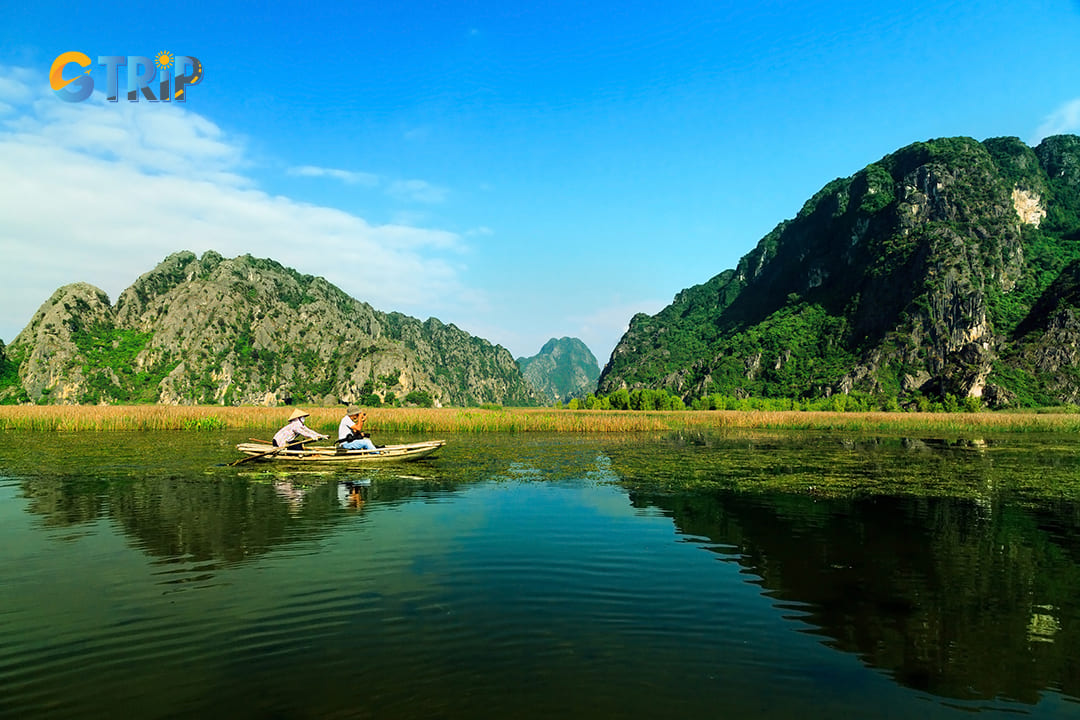
The wetland ecosystem in Van Long supports a diverse range of flora and fauna
Rice paddies and rural landscape
Surrounding the wetland, Van Long features expansive rice paddies that enhance the rural landscape of the area. The vibrant green fields complement the serene blue waters of the wetland. It creates a harmonious blend of natural and cultivated landscapes that define the scenery.
The rice paddies in Van Long are visually impactful, especially during harvest season when the fields turn golden. They add depth and color to the landscape, contrasting beautifully with the limestone peaks and wetlands.
The interaction between the rice paddies and wetlands is essential to the area’s ecosystem, as both landscapes support different forms of biodiversity. The paddies act as buffers, filtering runoff water and providing habitats for species that thrive on the edges of the wetland.

Rice paddies and rural landscape of Van Long
Tourist activities in Van Long Wetland Nature Reserve
Tourist activities at Van Long Wetland Nature Reserve include scenic boat tours, wildlife photography, cultural exploration, and nature walks.
Boat tours
Van Long Wetland Nature Reserve offers memorable boat tours that provide a close-up view of its stunning landscapes and abundant wildlife. Known as the “no wave wetland,” the calm waters create a mirror-like surface, reflecting the limestone cliffs and unique mountain shapes such as Meo Cao, Mam Xoi, and Co Tien. Traditional sampan rides, operated by local rowers, allow travelers to glide through the serene wetlands. They can even spot wildlife like the rare Delacour’s langur.
The boat tours meander through narrow waterways, showcasing diverse plant life and various bird species. Each route highlights different aspects of Van Long’s beauty, ensuring a memorable experience that captures the essence of this ecological haven. The water here is clear, revealing the layers of moss and vegetation below, adding to the tranquil charm of the reserve.
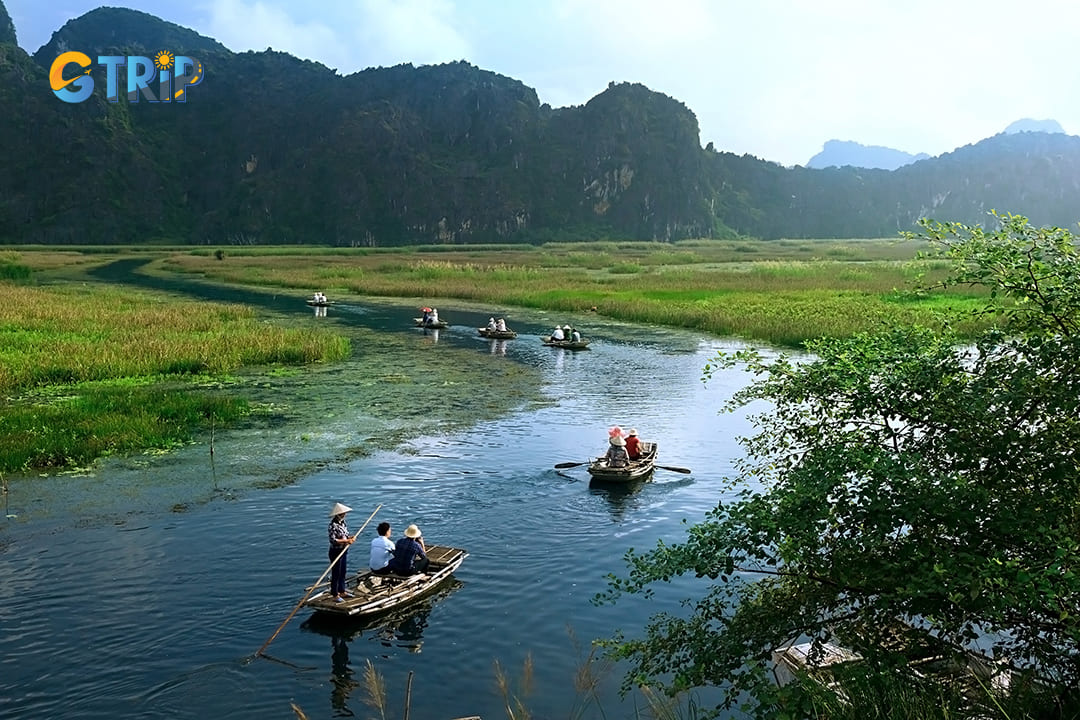
Van Long Wetland Nature Reserve offers memorable boat tours
Wildlife and nature photography
Van Long offers opportunities to capture both wildlife and breathtaking landscapes. The reserve provides perfect backdrops for photographers looking to capture local flora, fauna, and panoramic views.
The reserve’s wetlands, limestone karsts, and rice paddies offer some of the best locations for photography. For close-ups of local plants and birds, the wetland edges are ideal, while the limestone cliffs provide striking landscapes. Early mornings and late afternoons offer the best lighting for panoramic views.
To ensure wildlife conservation, Van Long encourages photographers to follow certain guidelines. Keeping a respectful distance from animals, avoiding flash photography, and staying on designated paths helps minimize human impact. These guidelines allow photographers to capture memorable images and contribute to the conservation efforts.

Wildlife and nature photography in Van Long
Exploring local culture
Van Long invites travelers to explore the local culture through interactions with nearby villages and community experiences. The reserve is surrounded by communities with rich traditions, where local crafts and customs provide insight into rural Vietnamese life. Travelers can connect with locals, learning about their lifestyles and traditional crafts.
Nearby villages offer authentic experiences that include local crafts, such as weaving and pottery, as well as insights into traditional farming. Many communities around Van Long have preserved their cultural heritage, offering an opportunity for cultural exchanges. You can observe or even participate in some of these traditional practices.
The area around Van Long is home to historical and cultural sites, including ancient temples and pagodas that date back centuries. These sites showcase Vietnam’s rich history and spiritual heritage, providing a cultural dimension to the natural beauty of the reserve.
In addition, trying Ninh Binh specialties is also a way to discover local culture
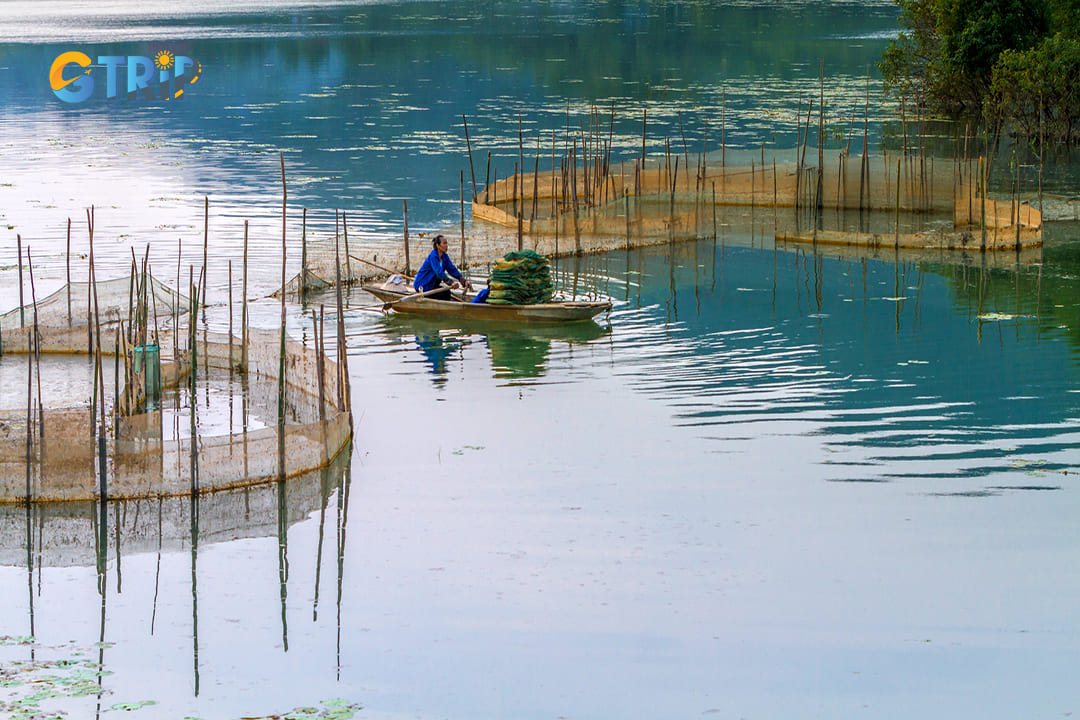
Explore the local culture through interactions with nearby villages and community experiences
Hiking and nature walks
Van Long provides scenic hiking trails and nature walks that are ideal for those looking to explore on foot. These light hiking trails lead through the reserve’s beautiful landscapes, offering stunning viewpoints and peaceful experiences in nature.
The reserve features several trails suitable for light hiking, where travelers can enjoy scenic viewpoints and diverse ecosystems. These trails offer a mix of gentle slopes and level paths, making them accessible to all fitness levels.
Van Long is an excellent place for birdwatching and wildlife spotting, with nature walks designed to provide close encounters with the reserve’s biodiversity. Walks along the wetland edges and rice paddies are ideal for spotting local bird species and small wildlife. These nature walks offer a slower, more focused exploration, perfect for those interested in observing wildlife in its natural habitat.
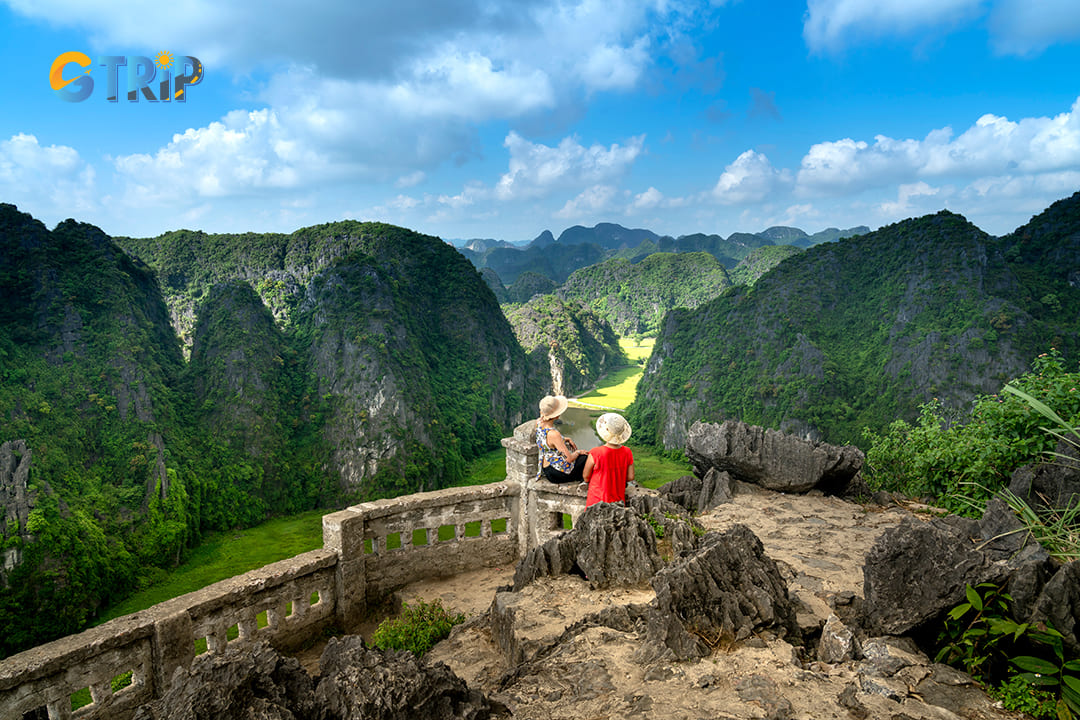
Van Long has long routes for you to climb and enjoy the panoramic view of Van Long when you reach the top of this place
Environmental significance of Van Long Wetland Nature Reserve
The environmental significance of Van Long Wetland Nature Reserve lies in its vital role in biodiversity conservation, climate regulation, and ecosystem balance.
Conservation efforts
Van Long Wetland Nature Reserve is a vital area for conservation, with efforts that involve local communities, government bodies, and international organizations. These conservation initiatives focus on protecting the rich biodiversity of the reserve, which is home to numerous endangered species and unique ecosystems.
Programs aimed at preserving wildlife and their habitats are central to these efforts, ensuring the long-term sustainability of the area. Partnerships with environmental NGOs play a crucial role in implementing strategies and raising awareness about the significance of the wetland.
Various local and international conservation initiatives have been established to protect Van Long’s biodiversity. These projects often involve habitat restoration, species monitoring, and community engagement activities. By working together, stakeholders aim to enhance the effectiveness of conservation measures and promote ecological resilience.
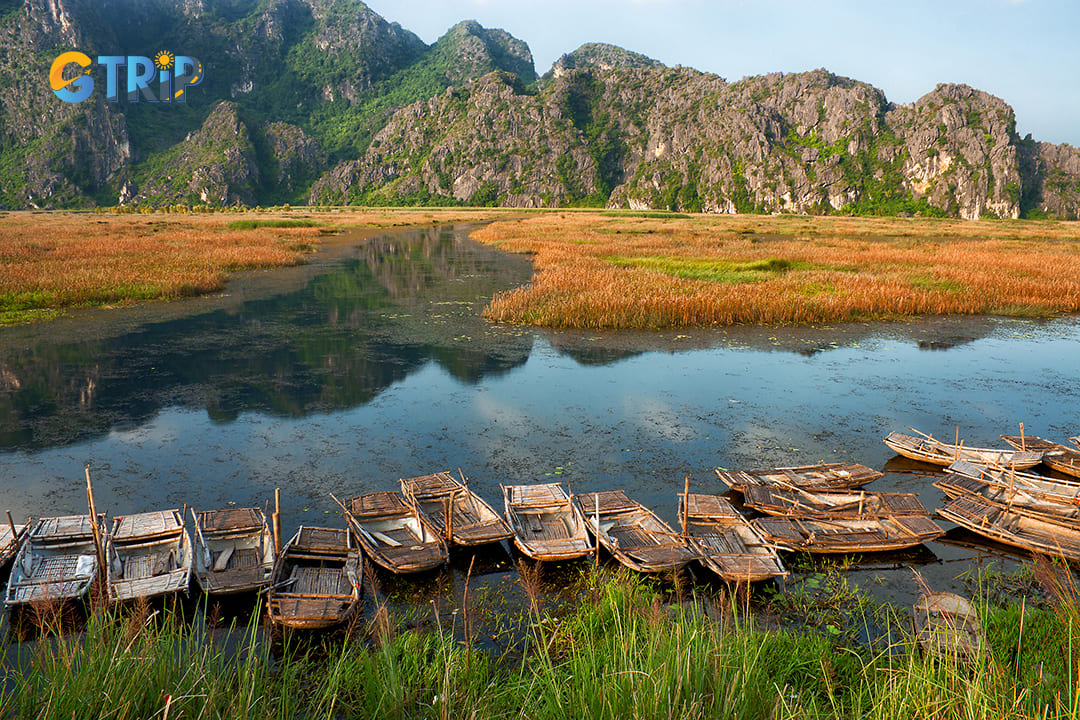
Van Long wetland is an important area to preserve, the autumn view of Van Long
Successful initiatives often showcase innovative approaches to conservation, creating models that can be replicated in other regions facing similar challenges. These collaborative efforts are essential for the ongoing health of the wetland and its ecosystems. Despite these efforts, conservation in Van Long faces several challenges, including habitat destruction, pollution, and climate change. These threats significantly impact wildlife populations and their habitats. Ongoing protection measures are crucial to address these challenges effectively.
Implementing sustainable land-use practices, strengthening laws for wildlife protection, and increasing community involvement are potential solutions to these issues. By addressing these challenges head-on, conservation efforts can ensure the preservation of Van Long’s unique environment.
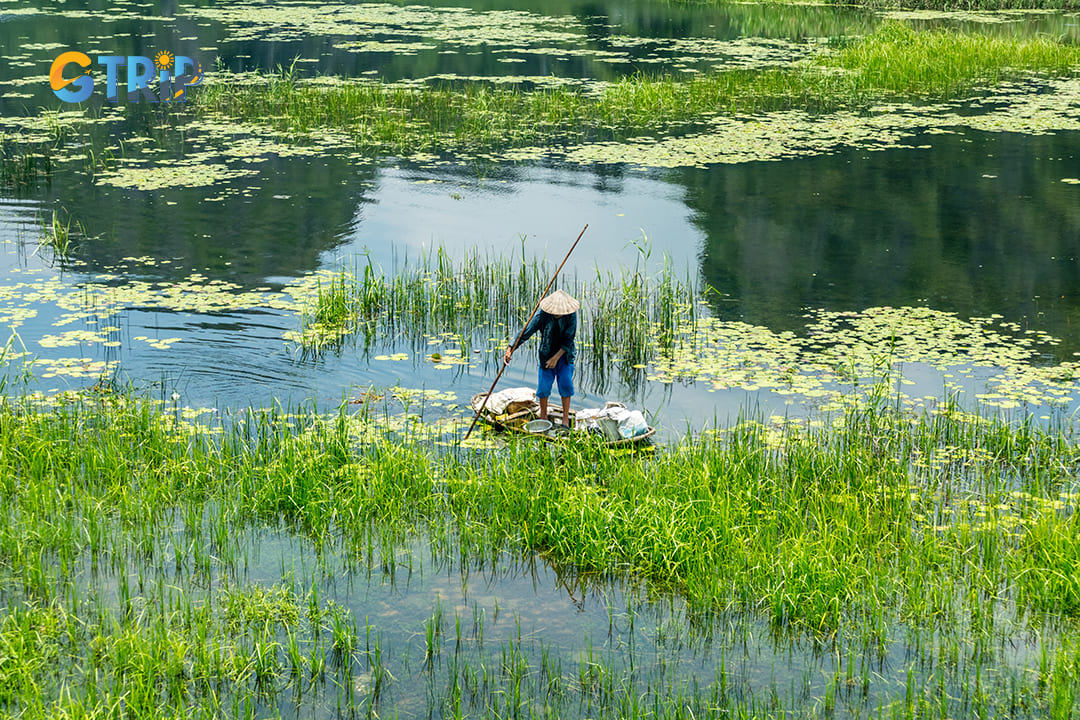
Conservation efforts can ensure the preservation of Van Long’s unique environment
Climate and ecosystem impact
Van Long Wetland plays a significant role in regulating the climate and supporting regional ecosystems. Its unique landscape contributes to the mitigation of climate change impacts, as wetlands are known to sequester carbon and manage water levels effectively. The balance maintained by the wetland is crucial for local agriculture and biodiversity, ensuring that ecosystems remain healthy and resilient to changes in climate.
The role of Van Long in climate regulation is profound, as the wetland helps to reduce carbon emissions and improve air quality. By absorbing excess carbon dioxide, the reserve plays a critical part in combating climate change and promoting a healthier atmosphere.
Furthermore, the wetland’s ability to manage water levels aids in flood control and irrigation. Thus, it is an essential resource for the surrounding agricultural areas. This climate regulation is vital for maintaining ecological balance in the region.
The interactions between various species and their environments create a complex web of life that is critical for sustaining the ecological integrity of the area. This balance is crucial for ensuring that ecosystems remain resilient and can adapt to environmental changes.
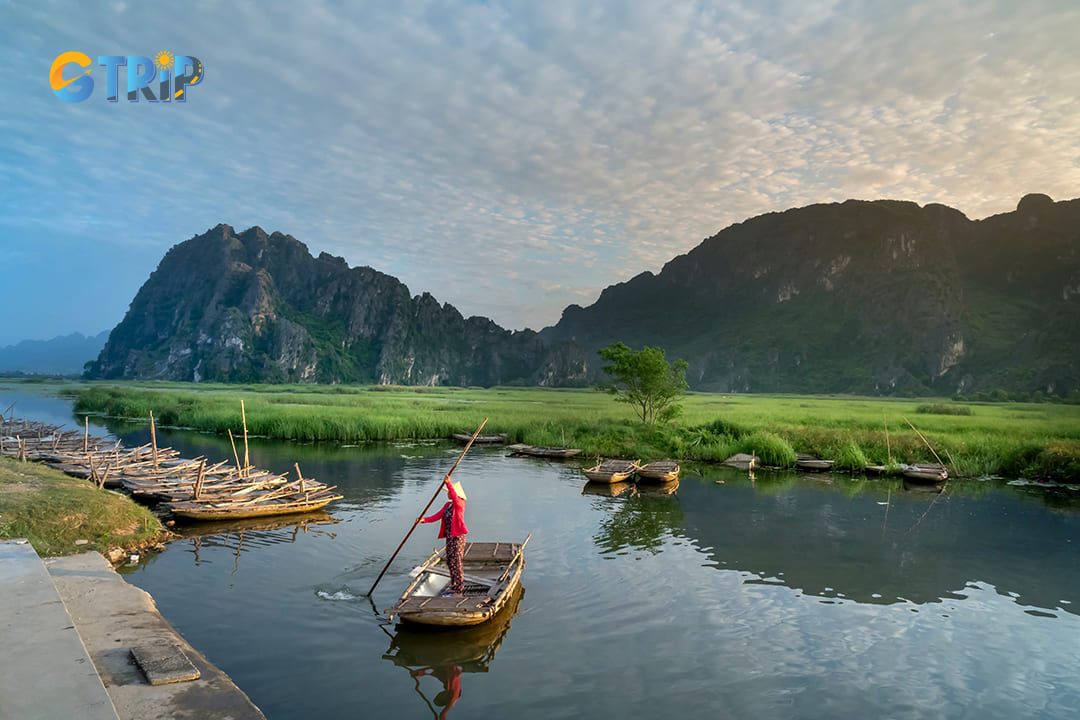
Climate and ecosystem impact in Van Long
Education and research
Education and research initiatives are fundamental to promoting awareness and understanding of conservation efforts in Van Long. The reserve supports various educational programs that involve local communities and schools. These programs aim to enhance knowledge about the unique ecosystems found in Van Long and foster a sense of responsibility among future generations.
Collaborations with universities, environmental organizations, and research institutions play a vital role in advancing conservation science in Van Long. These partnerships often focus on studying biodiversity, habitat restoration, and sustainable practices that benefit both the environment and local communities. Through rigorous research, these initiatives provide valuable insights that inform conservation strategies and policies, ultimately enhancing the effectiveness of ongoing efforts.
Public education is crucial for raising awareness about conservation issues and sustainable tourism practices. Various awareness programs in Van Long aim to engage both locals and travelers in preserving the reserve’s natural beauty.
By fostering a culture of sustainability, these educational initiatives encourage responsible behaviors that contribute to the conservation of Van Long and its ecosystems. Educating the public on the importance of protecting natural resources is essential for ensuring the reserve’s long-term viability.

There are many types of fish living in the lake in Van Long
Travel guide when visiting Van Long Wetland Nature Reserve
The Van Long Wetland Nature Reserve travel guide offers essential tips on transportation, the best times to visit, and etiquette for a memorable and responsible experience.
Getting to Van Long
Getting to Van Long Wetland Nature Reserve is straightforward, with various transportation options available from major cities like Ninh Binh and Hanoi. The journey typically involves a combination of public transport and local means to reach the reserve.
From Ninh Binh, the reserve is only about 20 kilometers away, making it easily accessible by bus or taxi. Frequent buses connect Ninh Binh to Gia Vien, where travelers can catch a local taxi or motorbike to Van Long.
For those traveling from Hanoi, it is about a 90-kilometer journey. Buses and trains are available, with many travelers opting for a bus to Ninh Binh and then transferring to a local mode of transport to reach the reserve.
Once at Van Long, local transportation options include motorbike rentals, bicycles, and taxis. Many travelers choose to rent bicycles for a leisurely ride through the scenic landscape. The area is relatively flat, making it suitable for cycling. Accessibility is good, with well-marked paths and roads leading to various points of interest within the reserve. Local guides can also be hired for more in-depth exploration of the wetlands and surrounding areas.
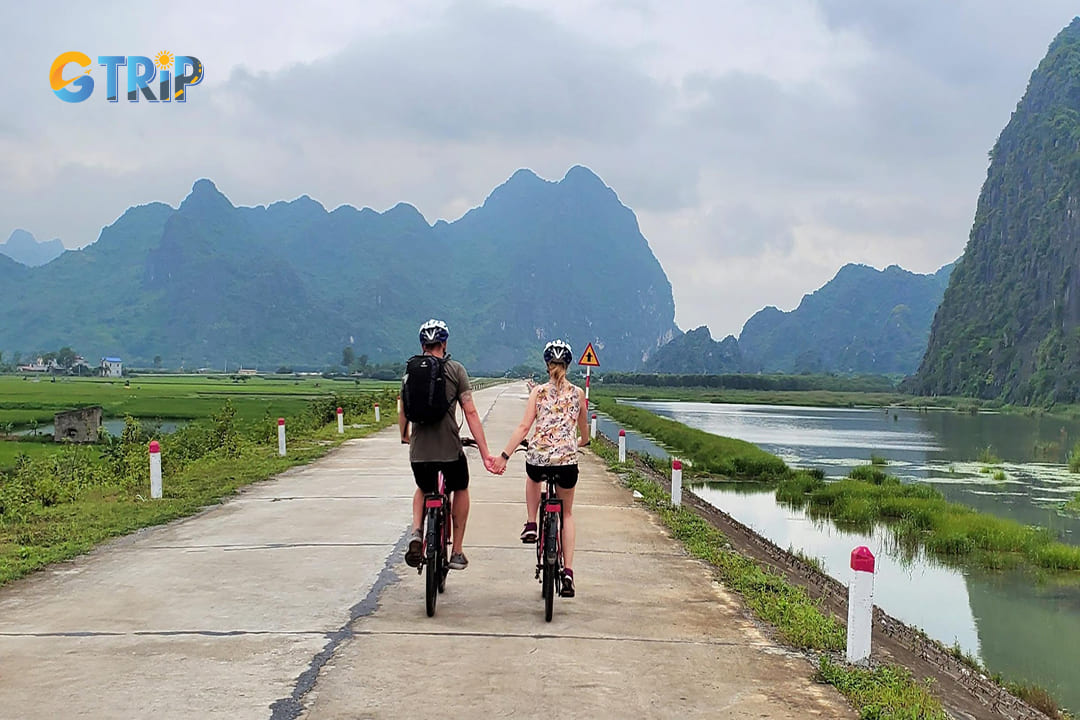
Cycling on the roads in Van Long is both a cool and sporty activity, but please ensure safety
Best times to visit
The best times to visit Van Long Wetland Nature Reserve are typically in the spring (March to May) and autumn (September to November). During these seasons, the weather is mild, and the landscape is particularly beautiful, showcasing lush greenery and vibrant wildlife.
Spring brings mild temperatures ranging from 20°C to 25°C, making it ideal for outdoor activities such as boat tours, hiking, and birdwatching. Autumn also offers pleasant weather, with temperatures similar to spring, creating perfect conditions for exploration and photography. In contrast, summer can be hot and humid, while winter can be cooler. Therefore, planning your visit during the shoulder seasons is recommended for the most enjoyable experience, not in summer and winter.
Seasonal events, such as the migration of various bird species, can also influence the best times to visit. From late autumn to early spring, migratory birds flock to the wetlands, offering fantastic bird watching opportunities. This is a prime time for wildlife enthusiasts to witness rare species and capture stunning photographs of the diverse ecosystem.

Wooden boats are always ready for a boat tour to serve tourists
Travel tips and etiquette
When visiting Van Long, it’s essential to be well-prepared and aware of local customs. Travelers should pack lightweight, breathable clothing, especially during warmer months. Comfortable shoes are essential for walking and hiking. Bringing a wide-brimmed hat, sunglasses, and sunscreen will help you protect against the sun. Additionally, don’t forget to carry water bottles and snacks, as facilities may be limited in some areas.
Respecting wildlife and the environment is crucial while exploring Van Long. People should keep a safe distance from animals and avoid disturbing their habitats. Following the principle of “leave no trace” is important. It means you should dispose of waste properly and avoid picking plants or disturbing natural features. Adhering to these guidelines ensures the preservation of this beautiful natural reserve for future generations.

The poetic scenery inside Van Long will make you never bored
Conclusion: Why Van Long Wetland Nature Reserve should be on your travel list
Van Long Wetland Nature Reserve highlights some of the most captivating natural and cultural treasures in Vietnam. Its stunning landscapes, from serene wetlands to striking limestone karsts, create an unforgettable visual experience. The rich biodiversity emphasizes its importance as a haven for rare wildlife, including the endangered Delacour’s langur. For those seeking adventure, Van Long offers an immersive experience through activities like sampan rides, nature walks, and birdwatching.
Beyond its beauty, Van Long urges travelers to appreciate the critical conservation efforts that protect this unique ecosystem. Sustainable tourism plays a key role in preserving the reserve’s ecological balance, and every traveler’s mindful actions can help support these efforts. By respecting local customs and protecting the environment, you contribute to the ongoing conservation that keeps Van Long thriving.
In conclusion, Van Long Wetland Nature Reserve is more than a beautiful destination. It’s a vital ecosystem that connects travelers to nature and conservation. For those planning a trip to Ninh Binh, Van Long is an essential stop. It offers a blend of natural wonder, cultural depth, and meaningful engagement with the environment. So, pack your bags, respect the wildlife, and let Van Long be a highlight of your journey in Vietnam.




